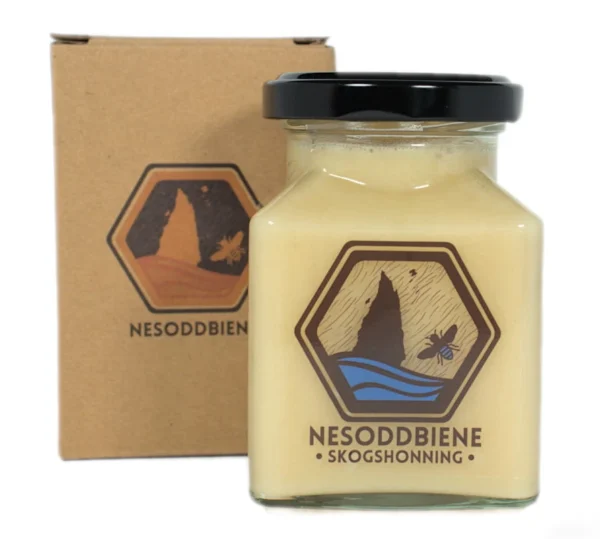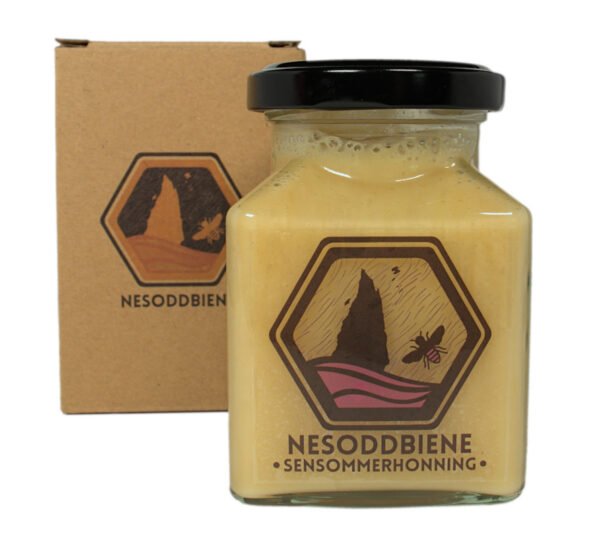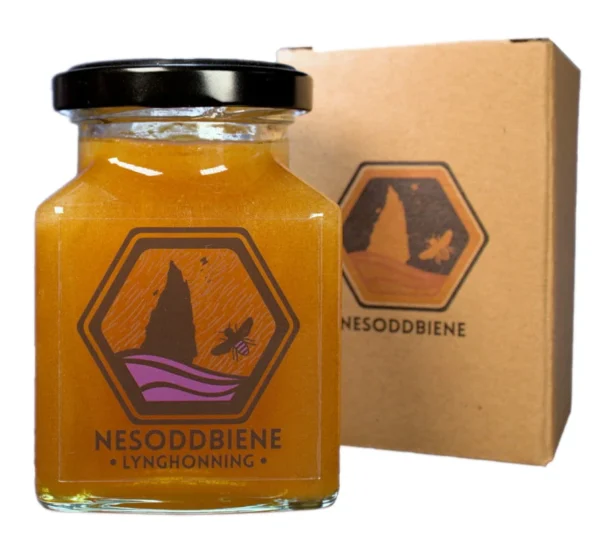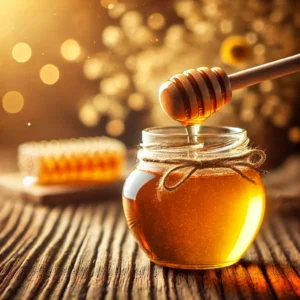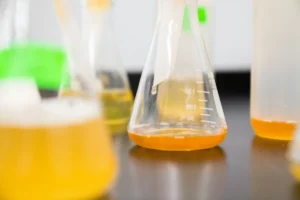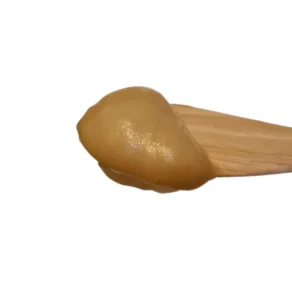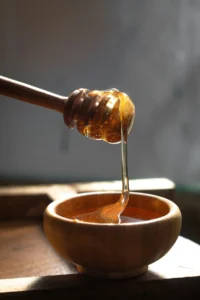Table of Contents
What is Raw Honey?
Raw honey, cherished by health enthusiasts and countless beekeepers alike, indicates that the honey closely resembles its original state within the beehive. This implies that raw honey retains all the valuable nutrients, including minerals, vitamins, antioxidants, and enzymes, just as it did while in the hive.
Raw honey undergoes no heating or filtration, although it does pass through a sieve to remove larger particles of pollen, propolis and beeswax. However, the sieve permits the passage of smaller particles, enhancing both the flavour and nutritional profile of the honey.
Raw honey may have a creamy or soft-set consistency, provided no heating is involved.
What is Pure Honey?
Pure honey signifies the absence of additives. It does not specify whether heating has been applied. The primary purpose of using the term “pure” is to indicate that nothing has been added; the jar contains solely honey.
In some regions, beekeepers are permitted to feed bees sugar all year round, which may end up in the honey if the bees were fed sugar while honey was present in the hive. In other areas, beekeepers are even allowed to add sugar syrup to the honey and still label it as honey.
The term “pure” serves as an assurance from the beekeeper or producer that the honey is 100% pure, without any additives.
Pasteurized vs. Pasteurized Honey:
Pasteurization is a specific method when the honey undergoes heat treatment. Whilst unheated honey indicates that no heating has been applied, unpasteurized honey may have been subject for heat treatment, but at lower temperatures.
Pasteurizing is commonly used in dairy products to eliminate harmful bacteria and prolong shelf life. However, this is not necessary for honey. Pasteurizing honey can indeed delay crystallization and maintain its liquid form for an extended period, although like other types of honey, it will eventually crystallize.
Unheated Honey:
Unheated honey, often referred to as “raw” or “unpasteurized,” maintains its natural composition thanks to the absence of heat during processing. Unlike many commercial honeys that undergo heating to delay crystallization and improve shelf stability, unheated honey retains its original enzymatic activity, vitamins, and minerals. This preservation of heat-sensitive nutrients ensures that unheated honey delivers the full spectrum of potential health benefits and flavour complexity.
To resolve crystallization in honey, the application of heat is recommended. Methods such as a hot water bath or the use of a thermostat oven are commonly employed.
According to the Norwegian Honey Act, honey should not be heated beyond 45°C/113°F, as exceeding this temperature disqualifies it from being marketed as “honey.”
Want to learn about the strict regulations of Norwegian honey? Read our regulations guide!
Bees typically maintain a hive temperature of around 35°C/95°F. While numerous studies suggest that honey can withstand temperatures up to 45°C/113°F without compromising its qualities, we trust to the wisdom of the bees. Our honey has never been subjected to temperatures exceeding those found naturally within the hive.
Unfiltered Honey:
Unfiltered honey, as the name suggests, skips the filtration process commonly applied to commercial honey varieties. By filtering the honey, the honey will look clearer and possibly more delicate in the jar, whilst unfiltered honey may be cloudier, depending on the nectar. While filtration removes impurities like pollen grains and propolis, unfiltered honey preserves these natural elements. The presence of pollen and propolis in unfiltered honey not only adds to its flavour profile but also provides potential health benefits.
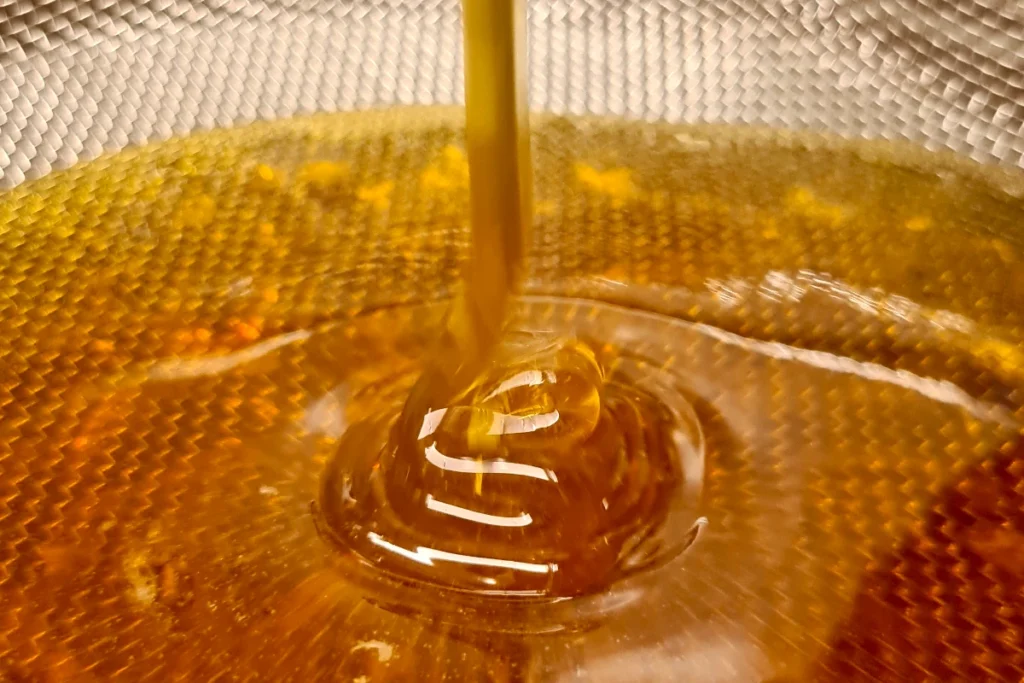
Soft Set Honey and Creamed Honey:
Soft set honey has like creamed honey a delicate structure that makes them easy to spread. When stored in a dark, dry place at room temperature or below, they maintain their smooth consistency without crystallizing or granulating.
Beekeepers and honey producers seem to disagree if soft set honey and creamed honey are the same. Complicating matters further, in certain regions, the term “creamed” honey is avoided to prevent consumer confusion, as it might imply the addition of cream to the honey.
However, the end product of both soft set honey and creamed honey is essentially the same: a honey with a velvety texture that remains stable when stored under appropriate conditions – dark, dry, and at room temperature or cooler.
If the beekeeper or honey producer differentiate between soft set honey and creamed honey, it often boils down to the process involved:
Soft Set Honey:
Soft set honey involves blending liquid honey with honey that has already reached the desired consistency and structure. Depending on the floral source of the honey, it undergoes a gentle stirring process lasting anywhere from a few minutes to a few hours before being poured into jars.
Creamed Honey:
Creamed honey starts as liquid honey and undergoes a meticulous stirring process conducted a couple of times a day. The duration of stirring varies depending on the floral source, typically spanning from 4 days to a couple of weeks until the desired texture is achieved, ready for bottling.
Whipped Honey:
Whipped Honey starts as liquid honey, just like soft set and creamed honey. The end product of whipped honey is easily spreadable honey, achieved by incorporating air into the honey.
Usually this is achieved by stirring the honey at higher speeds several times a day. Like creamed and soft set honey, this process depends on the floral source of the honey and will last for a few days up to a couple of weeks.
The key difference between whipped honey and creamed honey lies in the stirring process: creamed honey is stirred very carefully to avoid introducing air into the honey, while whipped honey deliberately incorporates air to achieve its light and fluffy texture.
Conclusion
Understanding these nuances empowers consumers to make informed choices, ensuring their honey selection aligns with their preferences and values.
Various honey varieties may meet one or more of the criteria explained above. Below is a table illustrating our honey offerings and the corresponding terms they adhere to.
| Raw | Pure | Un-pasteurized | Un-heated | Un-filtered | Soft Set | Creamed | Whipped | |
|---|---|---|---|---|---|---|---|---|
| Forest Honey | ✔ | ✔ | ✔ | ✔ | ✔ | ✘ | ✔ | ✘ |
| Late Summer Honey | ✔ | ✔ | ✔ | ✔ | ✔ | ✔ | ✘ | ✘ |
| True Ling Heather Honey | ✔ | ✔ | ✔ | ✔ | ✔ | ✘ | ✘ | ✘ |
Now that you understand honey labels, find the perfect raw, unfiltered honey for you! Explore our honey collection and taste the purest honey Norway has to offer.”


